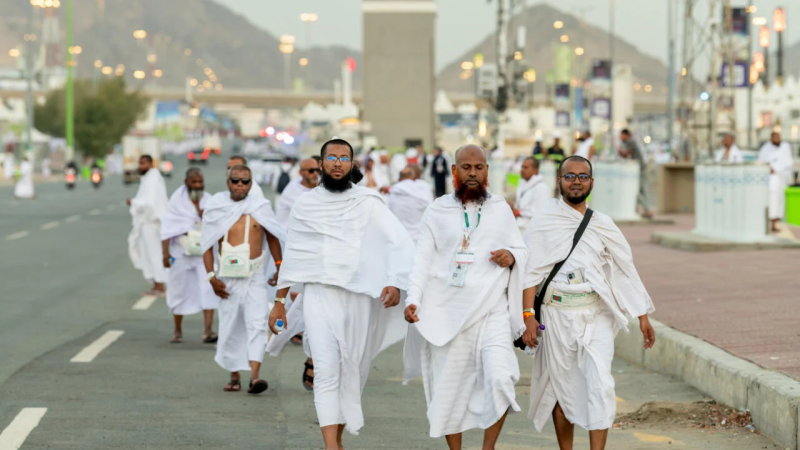- Southeast Asia Floods Kill Over 250, Thousands Displaced |
- Trump Vows to Halt Migration From ‘Third World’ Nations |
- Journos should strengthen themselves to secure rights: Fakhrul |
- Hong Kong’s deadliest fire in a century: How it spread |
- Khaleda ‘moved to Evercare CCU |
Pilgrims stone devil as Hajj ends under heat, tight watch

Muslim pilgrims on Friday performed the final major ritual of the annual hajj pilgrimage — the symbolic “stoning of the devil” — as Eid al-Adha celebrations began across the Islamic world.
At dawn, over 1.6 million pilgrims gathered in the Mina valley, on the outskirts of the holy city of Mecca, to hurl seven pebbles at each of three concrete pillars. The ritual commemorates the Prophet Abraham’s defiance of Satan, who, according to Islamic tradition, tried to dissuade him from obeying God’s command to sacrifice his son.
This year’s hajj unfolded under intense heat and heightened security. Saudi authorities rolled out extensive heat mitigation measures and cracked down on unregistered pilgrims, resulting in thinner crowds and a more controlled environment at key holy sites.
The measures were introduced to prevent a repeat of last year’s hajj, when a deadly heatwave claimed 1,301 lives. Temperatures then soared to 51.8°C (125°F), and most of the victims were undocumented pilgrims without official permits or access to essential services like shelter, water, and medical care.
To manage crowd sizes and ensure safety, Saudi Arabia issues hajj permits through a country-specific quota and lottery system. However, the high cost of attending leads many to attempt the pilgrimage without permits, risking arrest and deportation.
The Mina valley, where the stoning ritual takes place, was the site of a catastrophic stampede in 2015 that left over 2,300 people dead — one of the deadliest tragedies in hajj history.
The hajj and the lesser umrah pilgrimage together generate billions of dollars in revenue for Saudi Arabia each year. They also carry immense religious and political significance, reinforcing the Saudi king’s title as the Custodian of the Two Holy Mosques in Mecca and Medina.
The conclusion of the hajj coincides with Eid al-Adha, the Islamic festival of sacrifice, during which Muslims traditionally slaughter animals such as sheep, goats, cows, or camels to commemorate Abraham’s devotion and willingness to sacrifice.

